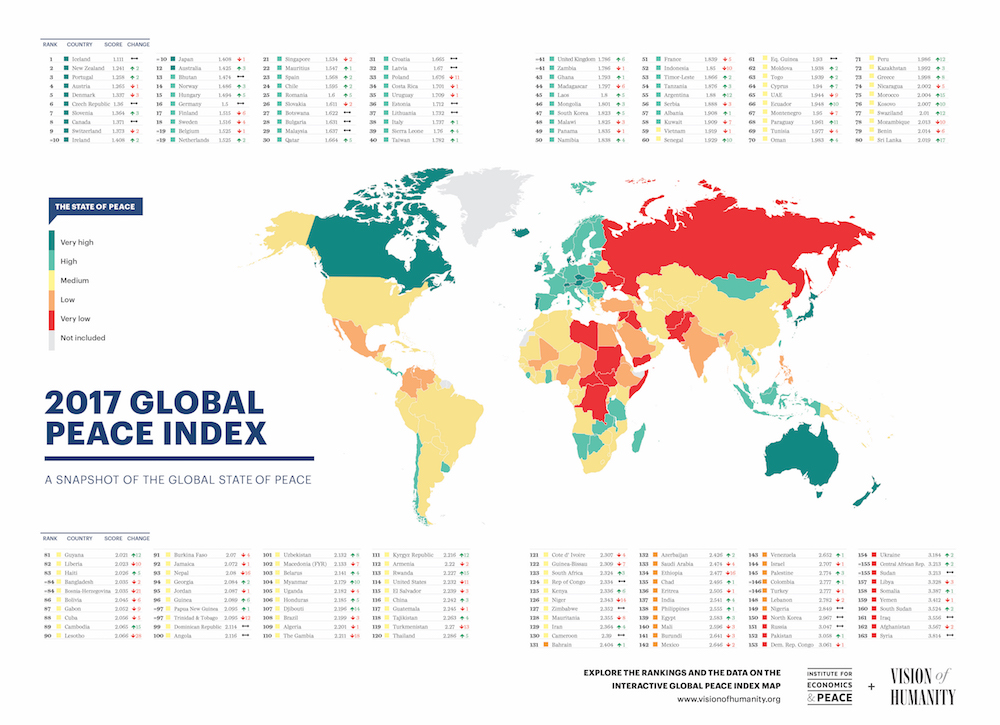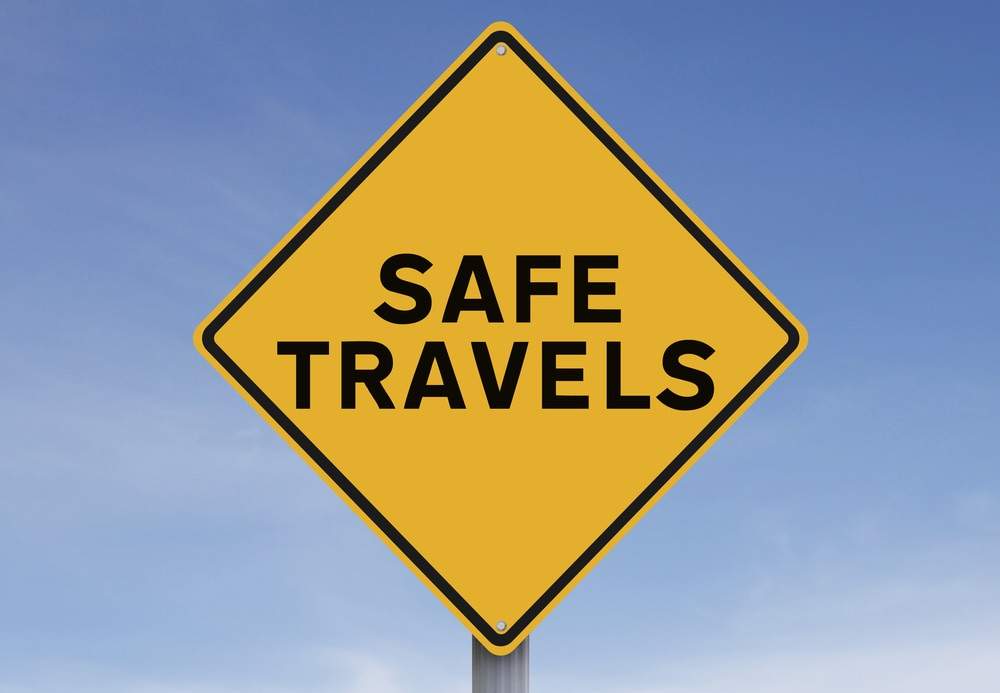“But it’s SO dangerous! Don’t you worry about the kids? Have you seen the news lately? There have been so many shootings. You know, we’ve been a lot of places, but that’s one place I’d never go. And certainly not with my kids!”
The conversation turned a corner and we chatted about their adventures in the more remote parts of China, Indonesia and India. We discussed our plans to leave the Barossa Valley the next day and turn north to drive right up through the red center of Australia to camp through the Outback.
My friend shook her head. “The snakes are no worry,” she assured me, “But I wouldn’t take my kids to America, it’s just too dangerous.”
How do you define a dangerous destination?

There are places that have a reputation for being “dangerous” that, in reality, aren’t. And then, there are places that most would consider very safe where something terrible happens. How do we decide which places are worth the risk, and which are not?
The Statistics

According to the Global Peace Index, 2017, the 25 Least Peaceful Countries are:
24-Philippines
23-Egypt
21-Mali
21-Brundi
20-Mexico
19-Venezuela
18-Israel
17-Palestine
16-Colombia
15-Turkey
14-Lebanon
13-Nigeria
12-North Korea
11-Russia
10-Pakistan
9-DRC
8-Ukraine
7-CAR
6-Libya
5-Somalia
4-Yemen
3-Iraq
2-Afghanistan
1-Syria
The 25 Most Peaceful are:
24-Chile
23-Spain
22-Mauritius
21-Singapore
20-Netherlands
19-Belgium
18-Sweden
17-Finland
16-Germany
15-Hungary
14-Norway
13-Bhutan
12-Australia
11-Japan
10-Ireland
9-Switzerland
8-Canada
7-Slovenia
6-Czech Republic
5-Denmark
4-Austria
3-Portugal
2-New Zealand
1-Iceland
Are you interested in where the USA ranks?
Number 114, in the bottom half of the rankings, rated as “Medium” by the index. We’ve fallen 20 places in the past two years… which means we are getting less peaceful. Number 115 is El Salvador, for perspective. January 10, 2018, the State Department issued a travel warning for El Salvador, advising Americans to reconsider travel to that country because of crime.
Realities to Consider

We’ve hung out in 12 of the 20 most dangerous cities in America, heck two of my kids were born in #16. I do not consider the USA dangerous. And yet, on paper, it’s dangerous. The current mass shooting count for this year stands at 34, and we are 56 days into the year (at the time of writing). With a gun death rate of 29.7 per 100,000 people, that shakes out to somewhere in the neighborhood of 32,000 gun deaths a year (UNODC data from 2014 study). No wonder my Australian friends are reticent to visit.
And yet, the USA is safe to travel in, right? We all know that.
Here’s the thing about statistics. If something has a one in a million chance of happening, it’s going to happen 8.4 times a day in New York City. It’s going to happen more like a thousand times a day in China.
Most Americans would have some reservations about the safety of traveling to Mexico. The State Department estimates that 150,000 U.S. citizens cross the borders into Mexico every single day. Only 75 Americans were killed in Mexico in 2016, down from 100 in 2014. Are some areas more dangerous than others? Of course! Just like Chicago rates as more dangerous than Boise, Idaho. For the 12th most dangerous country, Mexico doesn’t feel very dangerous in most places.
So, how do you decide which countries are safe?

When it comes to deciding where, within a questionable country, would be best to spend our time, I pay attention to the news (which is great at pointing out the negatives) and I ask friends, or find blogs about what the best places are to visit within a particular region.
Minimizing Risk

Having decent manners at all times, being a good guest in a country and familiarizing yourself with cultural norms is a good place to start. Dressing conservatively, for both men and women, is a no brainer. Avoiding illegal activity. Learning to speak a bit of the language. Respecting local traditions. Keeping culturally insensitive opinions to yourself. Those measures alone will up your chances of having a positive experience.
Register your travel plans with the embassy in the countries you’re passing through and that will make it easier for them to alert you if the security status changes in one region or another.
Travel is not, in my opinion, a particularly risky undertaking. Even when the destinations fall a little south of the center of that list of peaceful places. Even so called, “Dangerous Destinations,” can be perfectly safe and really worthwhile places to visit. The important thing is to gather information, think it through, and make informed decisions about how and where you choose to travel.